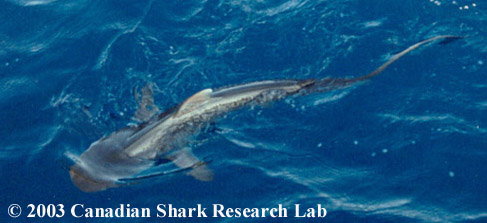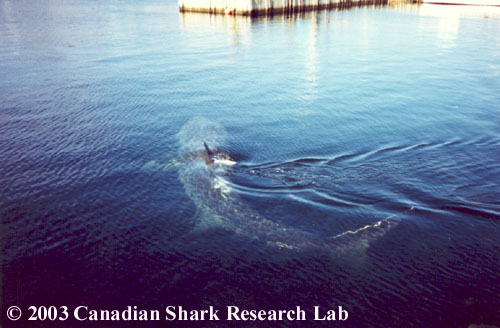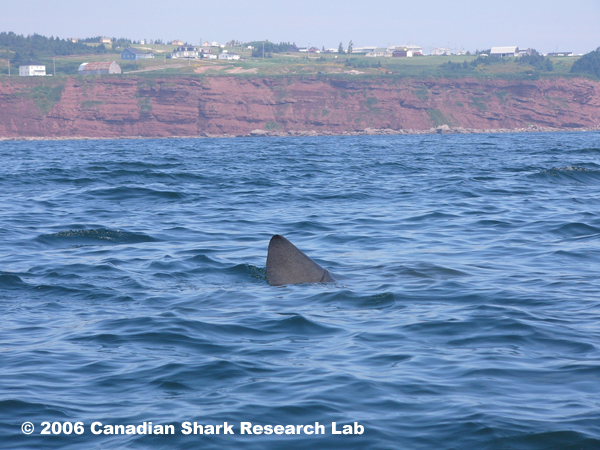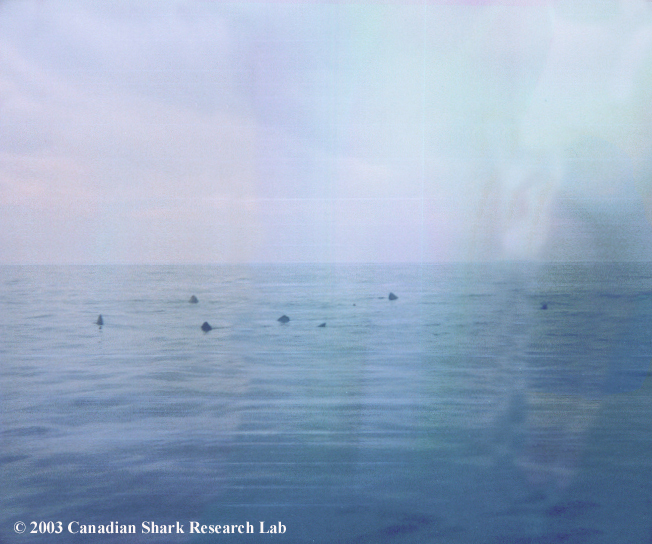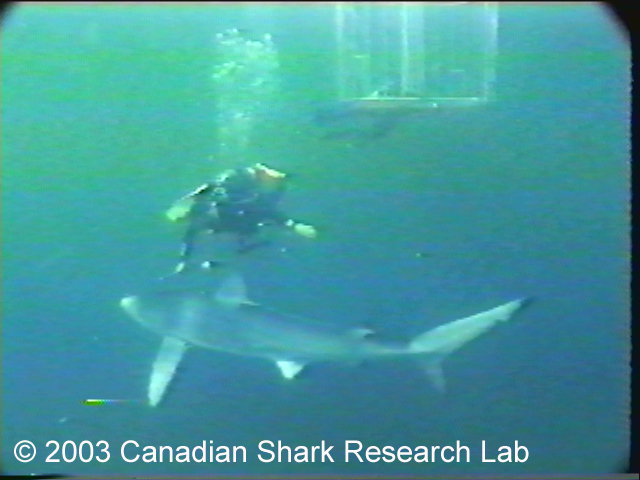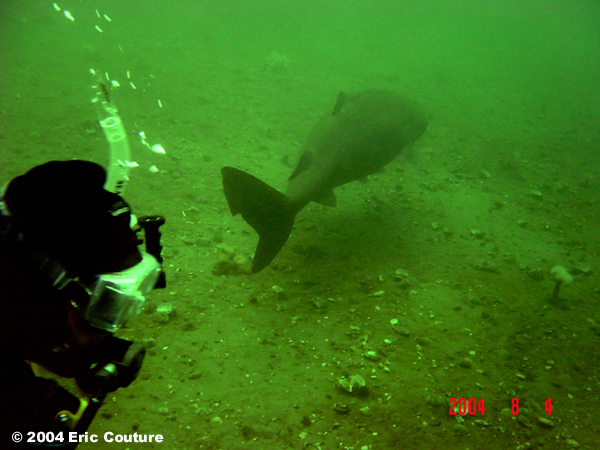Shark Sightings
This section is written with specific reference to Canadian sharks, but the general principles are entirely applicable to any shark found in Icelandic waters.
Most people don't know what to do when and if they spot a shark. The answer is: enjoy the view! All sharks regularly found in Canadian waters can be safely viewed from a boat, although care must be taken not to injure the shark by running over it. Basking sharks in particular are slow-moving and may be hurt by propellers. However some common sense should be used when observing any shark. Sharks are wild animals, and deserve the same level of respect given to any other wild animal. The "Raccoon Principle" applies here. Raccoons are wild animals, typically 50 cm long, which are fun to watch from a distance, but should never be touched or approached too closely. The larger the raccoon, the more respect it deserves. A raccoon which is 3 metres long deserves a great deal of respect indeed! Sharks should be considered in the same light.
The vast majority of shark sightings around the waters of Nova Scotia are of basking sharks, porbeagles, spiny dogfish or blue sharks. The other species that are found in Canadian waters are not generally found inshore or near the surface.
Many sharks are sighted in Canadian waters each year. Thankfully though, the sharks involved are not the species responsible for attacks on people. It is not uncommon for porbeagle sharks to stray in close to shore in late summer, and to be seen on or near the surface. This species eats only fish, and is generally not considered to be a threat to people. Blue sharks have also been abundant off Nova Scotia, but seldom stray into waters less than 100' deep. Some years are good for shortfin makos offshore as well. A handful of makos were landed at local shark tournaments in the summer of 2002 and several others were caught and released by recreational fishermen fishing several miles off of Halifax and Yarmouth. The increased number of mako sightings is probably due to warmer surface waters water temperatures compared to previous years.
A very large shark (20 to 30 feet long) swimming at the surface is most likely a plankton-feeding Basking Shark. These animals are often found swimming in coastal waters in summer and despite their size, are completely harmless.
A small group of 3 to 4 foot sharks in inshore waters is almost certainly made up of Spiny Dogfish. Dogfish often school together and can be found both at the surface and at depth.
The only other shark that is likely to be seen in the coastal waters of Nova Scotia is the Blue Shark. However it usually only appears at the surface when feeding, so sightings of blue sharks are not as common.
Scuba divers do not normally encounter sharks while diving in Canadian waters, but those they do see are usually one of the species mentioned above.
In the last two years a number of sightings of the Greenland Shark have been reported in the Baie Comeau area of Quebec. In the spring of 2003, a group of researchers were able to successfully film and photograph a number of greenland sharks after many years of searching in other areas along the St. Lawrence and Saguenay rivers. Numerous sightings were again recorded in the summer of 2004 (approx. 27) by both researchers and local divers. In addition, 4 greenland sharks were found washed up on the shore dead or dying. These sharks were examined by researchers, although the cause of these incidents is unknown at this time.
If you are curious about the types of sharks you may have seen, there are several field guides or keys available to help identify the animal. Be sure to look at the Key to Shark ID found within this web site. When viewing a shark in the wild be sure to take notice of a few key characteristics that will help you identify it later;
- colour
- body shape and size
- size and position of the first dorsal fin compared to the second
- shape of the head
- size and shape of the upper and lower caudal (tail) fin
- length of the pectoral fins
